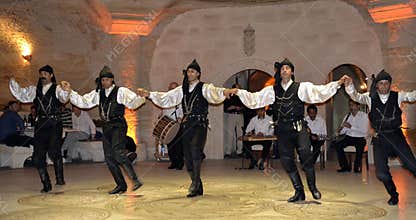Woman With Traditional Clothes And Jewelry.ethiopia, Omo Valley. The Karo, Or Kara, Are A Nilotic Ethnic Group In Ethiopia Famous For Their Body Painting. They Are Also One Of The Smallest Tribes In The Region With An Estimated Population Of 1.000-1.200 People. They Are Closely Related To Their Neighbors, Hamer And Banna, With A Lexical Similarity Of 81 They Live Along The East Banks Of The Omo River In Southern Ethiopia And Survive On Agriculture And Natural Annual Flooding. They Have Had The Same Culture And Traditions For 500 Years, Like Traditional Dancing And Painting Their Bodies With A Mix Of Ash And Fat Or Water.the Karo People Differentiate Themselves From Many Of The Neighbouring Tribes By Excelling Specifically In Body And Face Painting. They Paint Themselves Daily With Coloured Ochre, White Chalk, Yellow Mineral Rock, Charcoal, And Pulverized Iron Ore, All Natural Resources Local To The Area. The Specific Designs Drawn On Their Bodies Can Change Daily And Vary In Content, Ranging From Simple Stars Or Lines To Animal Motifs, Such As Guinea Fowl Plumage, Or To The Most Popular €“ A Myriad Of Handprints Covering The Torso And Legs. Both The Karo And The Hamar Men Use Clay To Construct Elaborate Hairstyles And Headdresses For Themselves, Signifying Status, Beauty, And Bravery.the Photo Is Part Of The Album `Second Ethiopian Tribes Expedition`
ID 016500456530 © Picsvet | Megapixl.com
Sharing is not just caring, it's also about giving credit - add this image to your page and give credit to the talented photographer who captured it.:
KEYWORDS
adult african annual area attractive beautiful camera caro cheerful clothes ethiopia ethiopian expedition female flooding girl gorgeous happy jewelry karo lifestyle living looking natural omo peaceful people person portrait pretty serene smile southeast survive traditional tribe tribes tribespeople valley woman women






































